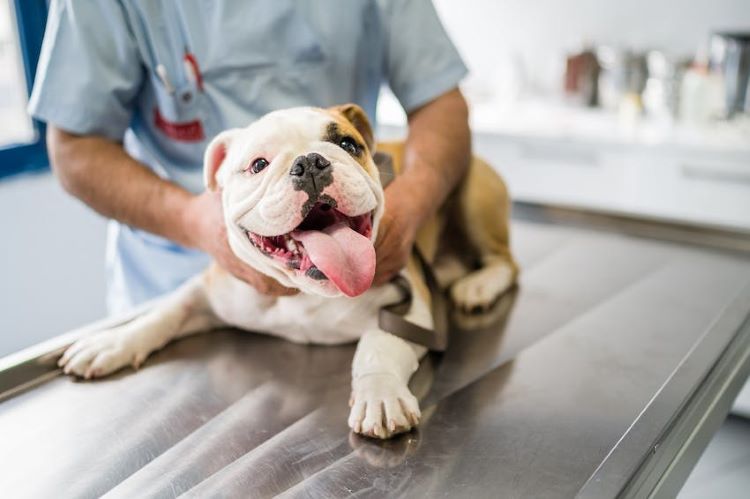Ready to help treat your pet to a healthy life?
Pet Diabetes: Understanding Types, Signs & Treatment
By : Alyssa Little & Trupanion Staff | Updated Nov 7, 2023

Pet diabetes is a growing concern among veterinarians and pet owners, affecting both cats and dogs of all breeds and ages. According to the North American Veterinary Community (NAVC), diabetes diagnoses are rising faster in dogs and cats than in humans, with more than 500,000 pets diagnosed with the condition each year. Over the past decade, the prevalence of diabetes in animals has gone up over 32% in canines and 16% in felines.
Sadly, many veterinarians believe the condition remains underdiagnosed due to pet owners not being familiar with the signs and/or not keeping up with routine veterinary visits. Just as with humans, however, diabetes in pets is incurable and can significantly impact quality of life of our furry companions. Diabetes can likewise worsen without proper intervention, and it can even be life threatening if allowed to progress. Fortunately, understanding the causes, symptoms, and the best ways to manage diabetes in pets is essential to helping them lead happy and healthy lives.
What is pet diabetes?
You've probably heard of diabetes before, but you might not know exactly what it is if you haven't been personally impacted. Diabetes in pets is a chronic health condition that affects how bodies convert food to energy. Often referred to as diabetes mellitus, this metabolic disorder is characterized by the body's inability to regulate blood glucose (blood sugar) levels properly. In diabetes, the normal mechanisms that control blood sugar are disrupted, leading to elevated blood glucose levels.
“Diabetes mellitus is a disease where your pet’s body can’t use sugar for fuel," explains Trupanion veterinarian Dr. Caroline Wilde. "This may happen for a few reasons, either due to the inability to produce insulin, decreased amounts of insulin, or an inability to use insulin.”
Nobody likes the idea of their pet having diabetes, and a diagnosis can be scary. However, the important thing to know is that it is manageable when addressed in early stages. While the information in this article is intended to be useful and help spread awareness, it is not a substitute for professional veterinary advice. Whether you suspect your dog or cat has diabetes or you have recently received a diagnosis, it is important to work with your pet's veterinarian for proper assessment and a treatment plan.
Types of diabetes in pets
Just like humans, dogs and cats can have either Type 1 or Type 2 diabetes mellitus. In rare cases, they can be diagnosed with both forms. Type 1 and Type 2 diabetes in pets share similarities with their human counterparts, but there are some differences in how the conditions develop and are managed in animals.
Type 1 diabetes
- Cause — Type 1 diabetes in pets is primarily due to an autoimmune process in which the pet's immune system attacks and destroys the insulin-producing beta cells in the pancreas. This results in an absolute insulin deficiency, meaning the animal's body is unable to produce insulin on its own.
- Insulin dependency — Pets with Type 1 diabetes require insulin therapy (via injections) for the rest of their lives. Without insulin injections, blood glucose levels become dangerously high due to not being regulated.
- Age of onset — Type 1 diabetes can occur at any age, but it is frequently diagnosed in younger animals. That said, some pets may go years before they are properly diagnosed or clear signs of the illness develop.
- Symptoms — Common symptoms of Type 1 diabetes in pets include increased thirst, frequent urination, weight loss, increased appetite, and lethargy.
- Treatment — Treatment typically involves insulin injections, regular monitoring of blood glucose levels, and a consistent, balanced diet. The primary goal here is to prevent complications of the illness by maintaining blood sugar levels within a target range (to be determined by your pet's veterinarian).
Type 2 diabetes
- Cause — Type 2 diabetes in pets is more associated with insulin resistance and relative insulin deficiency. This means a pet's pancreas may still produce insulin, but their body no longer responds properly to it. Over time, the pancreas may produce less insulin.
- Insulin dependency — While some pets with Type 2 diabetes can initially be managed with diet, exercise, and oral medications, they may eventually require insulin therapy as the disease progresses.
- Age of onset — Type 2 diabetes is more commonly diagnosed in older pets, particularly in those who are overweight or obese.
- Symptoms — The symptoms of Type 2 diabetes in pets are similar to Type 1 and can include increased thirst, frequent urination, weight loss, and lethargy.
- Treatment — Some pets with Type 2 diabetes may be successfully managed without insulin therapy, so treatment typically starts with making dietary changes and weight management. Oral medications may also be administered. As the illnesses progresses, however, insulin therapy may become necessary. Regular monitoring of blood glucose levels and regular veterinary checkups are essential.

How does diabetes in dogs and cats occur?
Some pet owners blame themselves when their dog or cat is diagnosed with diabetes, but this is neither helpful nor fair. There often isn't one set trigger that causes diabetes (either type) to manifest. That said, there are certain factors that can contribute to diabetes and cause the condition to worsen if already present. Some of these may or may not be within the pet owner's control.
"Obesity can increase the risk in both dogs and cats of becoming diabetic," Wilde says. "Diabetes can also occur secondary to long-term steroid administration."
Common signs of diabetes in pets
Since our pets can't talk to us and communicate what they're feeling, it can be tough to tell that something's wrong. That's why it's so important to get to know your pet's routine behaviors and appearance, taking note of any changes. Common signs of pet diabetes include:
- Increased/excessive thirst
- Increased urination
- Loss of urinary control
- Weight loss (especially when hunger still persists)
- Increase in appetite
- Weakness and lethargy
- Changes in skin/coat appearance
- Recurring/frequent infections
Of course, all pets are unique and may not show all signs at once.
"Sometimes the signs of diabetes can be more subtle and are not detected until the pet becomes very sick from the complications of diabetes mellitus,” Wilde says. " Because of this, please seek medical care immediately for your furry friend if you suspect your pet may have signs of diabetes."
Treating pet diabetes
Treatment of diabetes mellitus in pets all starts with proper diagnosis. This is usually done via blood tests and urine analysis. Your veterinarian may want to repeat blood sugar measurements or perform other confirmatory tests to ensure your pet is diabetic. They may also want to perform other diagnostic testing such as abdominal ultrasounds or blood pressure measurements.
Once diabetes is confirmed and the type is determined, your veterinarian will work with you to establish a routine treatment plan. As mentioned in the explanation of diabetes types above, this may start with making lifestyle changes or incorporating medication into your pet's daily routine. Many pets benefit from special prescription foods that help stabilize their blood sugar. For Type 1 and more severe cases of Type 2, pets will need daily insulin administration. Your veterinarian will show you how to do this safely.
New diabetes diagnoses require close monitoring to ensure the condition has been properly assessed. Pets often need weekly serial glucose measurements to determine the optimal dosage, as it varies between pets and types of insulin. Your veterinarian will make adjustments as needed.
Diabetes in cats vs dogs
While both dogs and cats can benefit from special diets to manage their condition, the needs here are often different. In dogs, that diet is most likely to be lower in fat and higher in fiber, whereas in cats, that diet is likely to be higher in protein.
It's also worth noting that when dogs are diagnosed diabetic, they will typically require insulin administration for the rest of their lives. Cats, however, are more likely to be ‘transiently diabetic,’ meaning that there is the possibility of diabetic remission, where they may no longer require insulin.

November is Pet Diabetes Awareness Month
November is Pet Diabetes Awareness Month in the United States, though it's the perfect time for pet owners worldwide to learn more about this condition and take any concerns about their own cats and dogs into consideration. It's also a good idea to look at pet diabetes prevention and what you can do to help keep your pal healthy. This starts with ensuring they are getting sufficient daily exercise and eating a healthy diet.
Diabetes in pets requires daily supervision and medical care, so if you have any cause for concern, please seek medical care from your veterinarian. This means if you have noticed potential signs of diabetes mellitus in your pet, it's time to make an appointment. Keeping a written record of concerning behaviors or possible symptoms can be helpful in getting a proper diagnosis sooner rather than later.
If your pet has already been diagnosed with diabetes, Pet Diabetes Awareness Month can likewise be a great time to evaluate their ongoing treatment plan and their current status. It's also a good opportunity to recognize that you're not alone, and there are pet owners all over the world also working to manage their beloved family member's condition every day. With dedication to proper care and a lot of love, pets with diabetes can still live long, happy lives.
Did you know that pet insurance can help with diabetes mellitus diagnosis and treatment costs? Learn more about coverage today!
